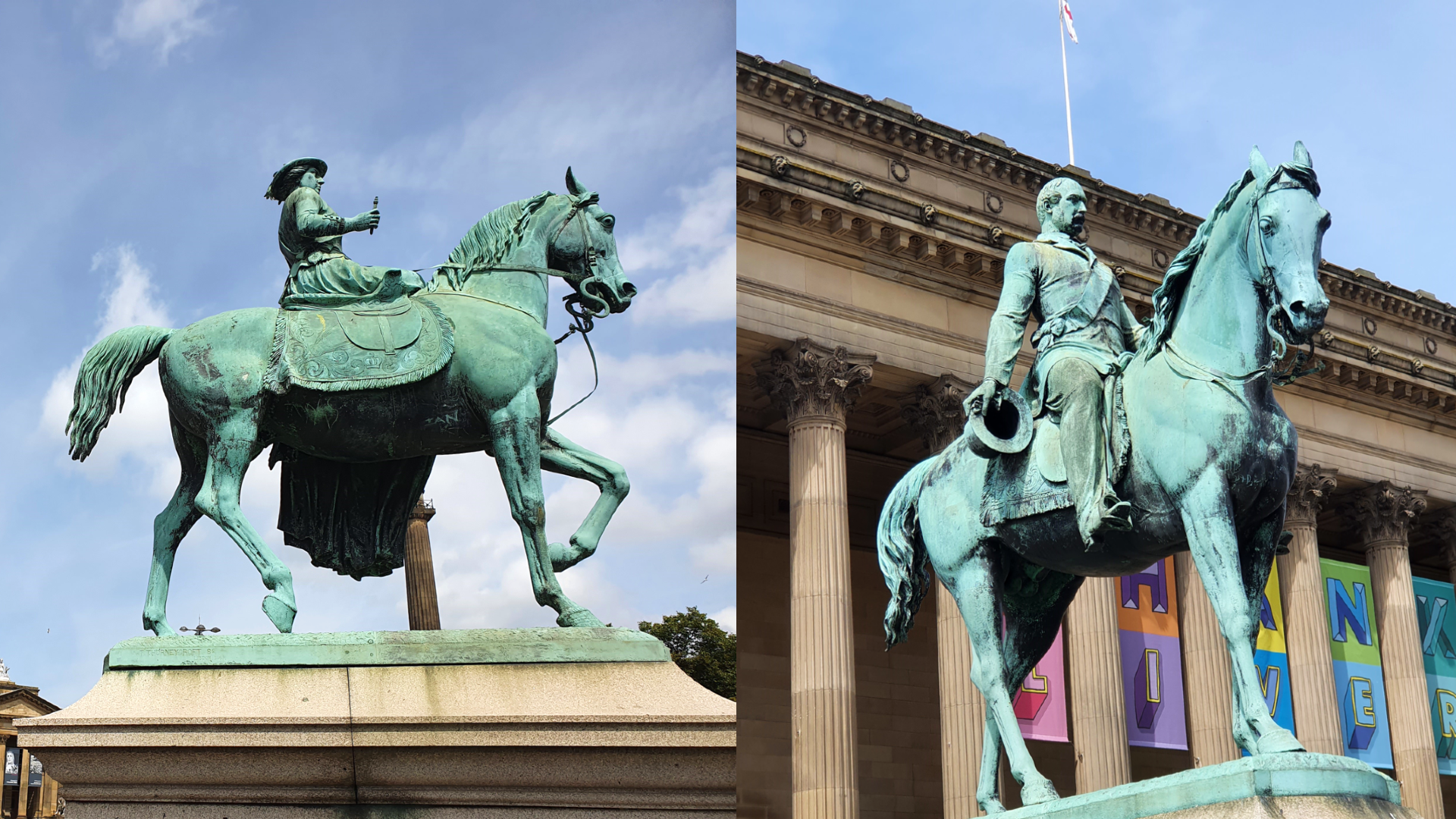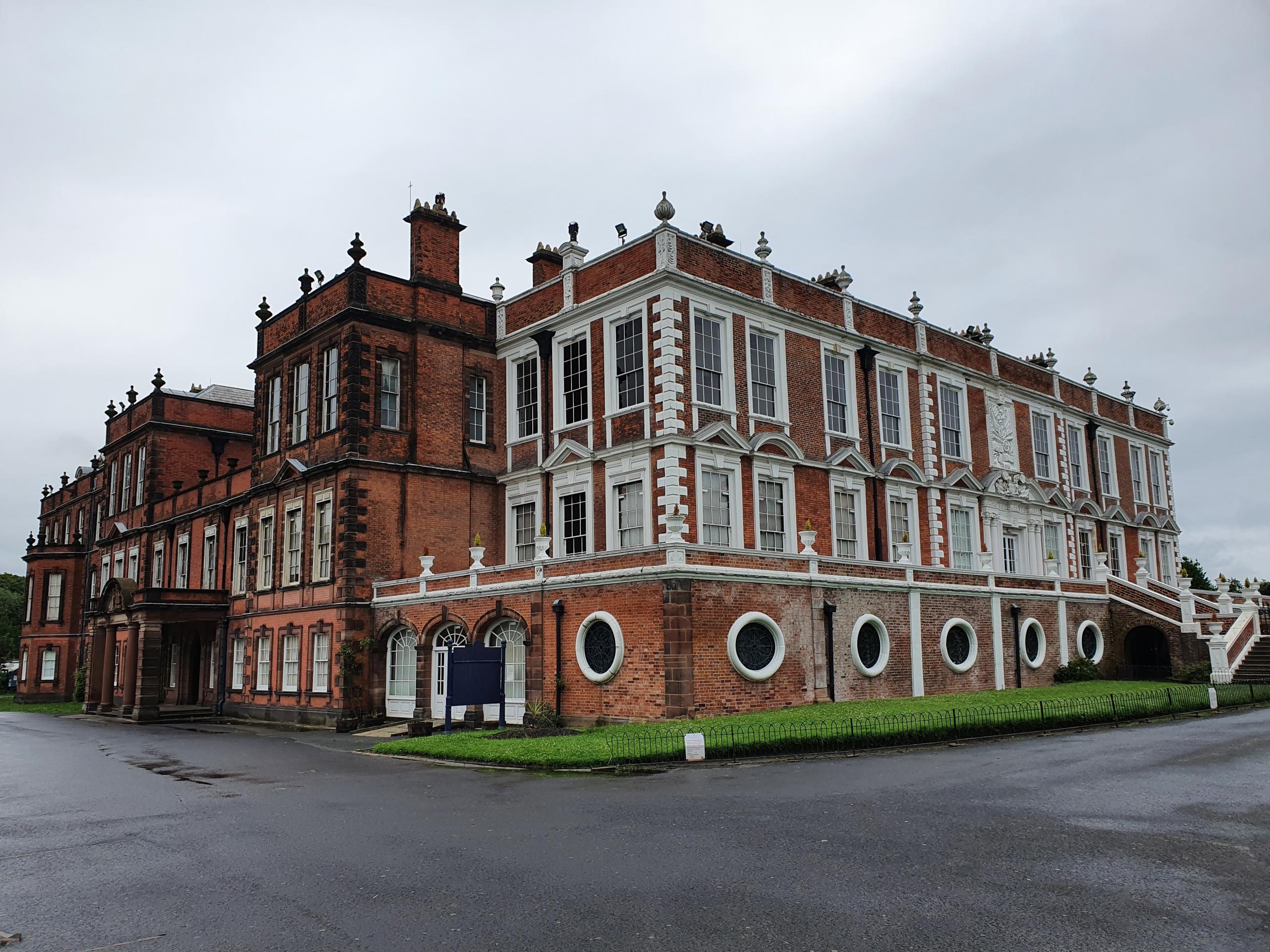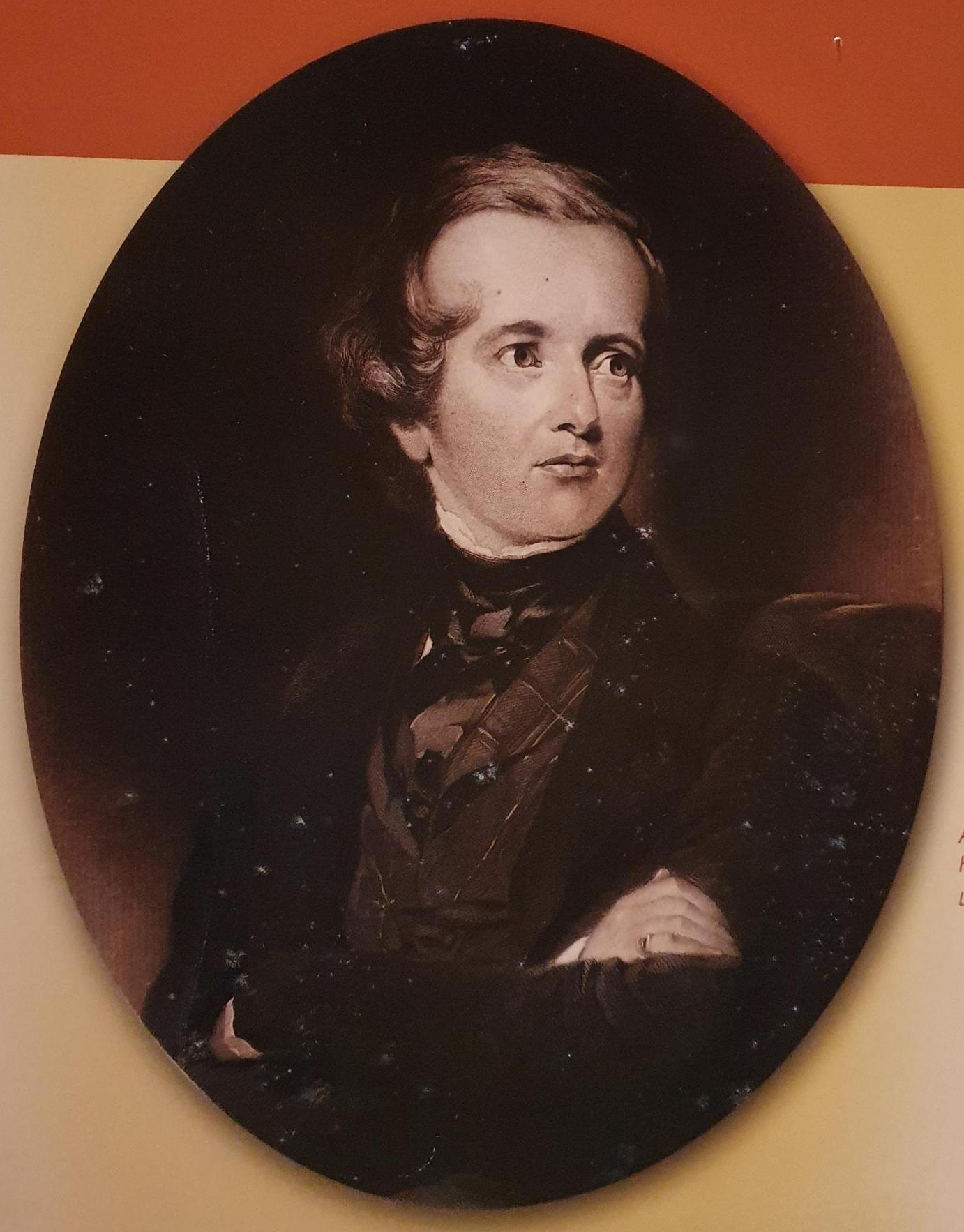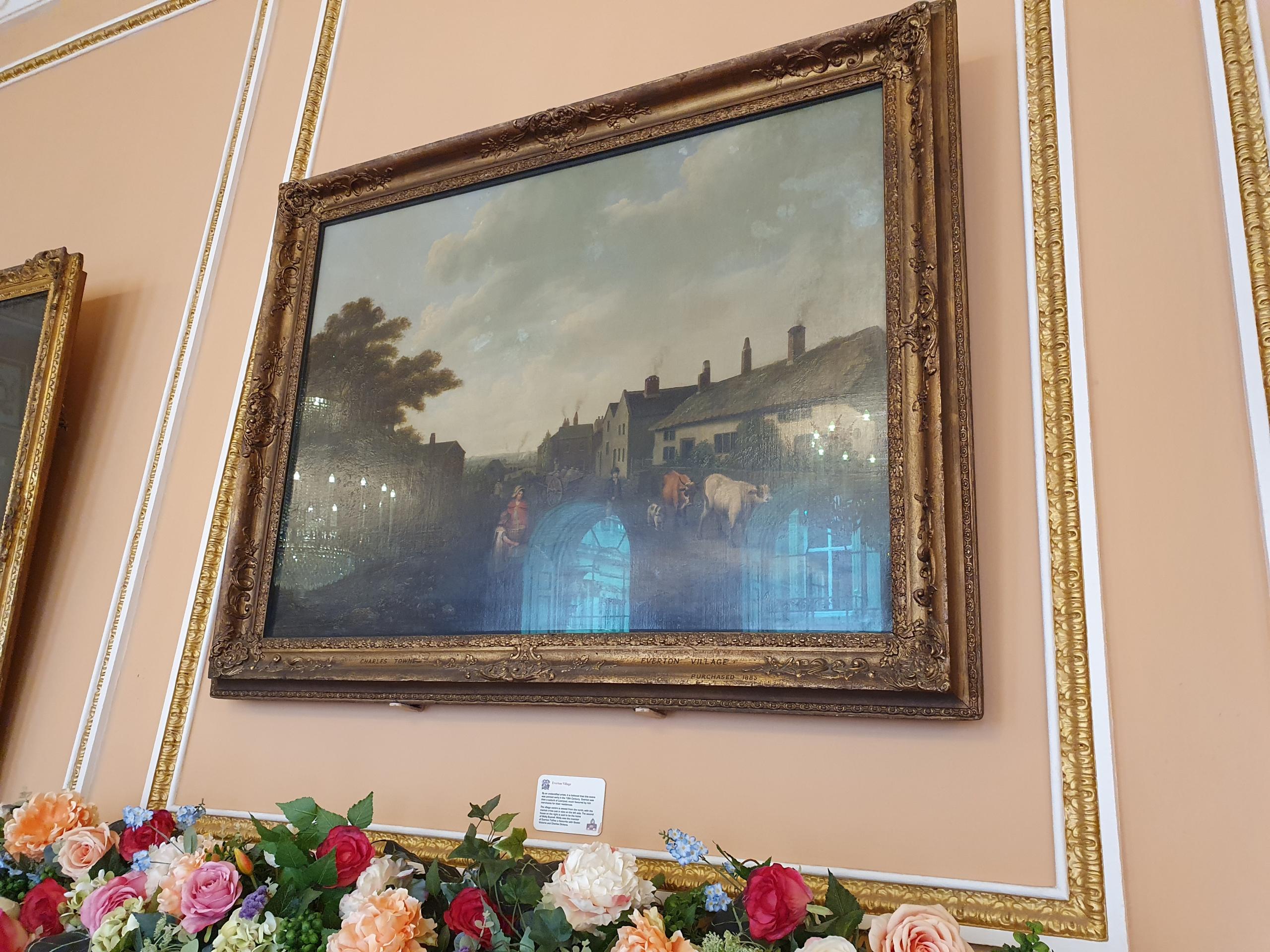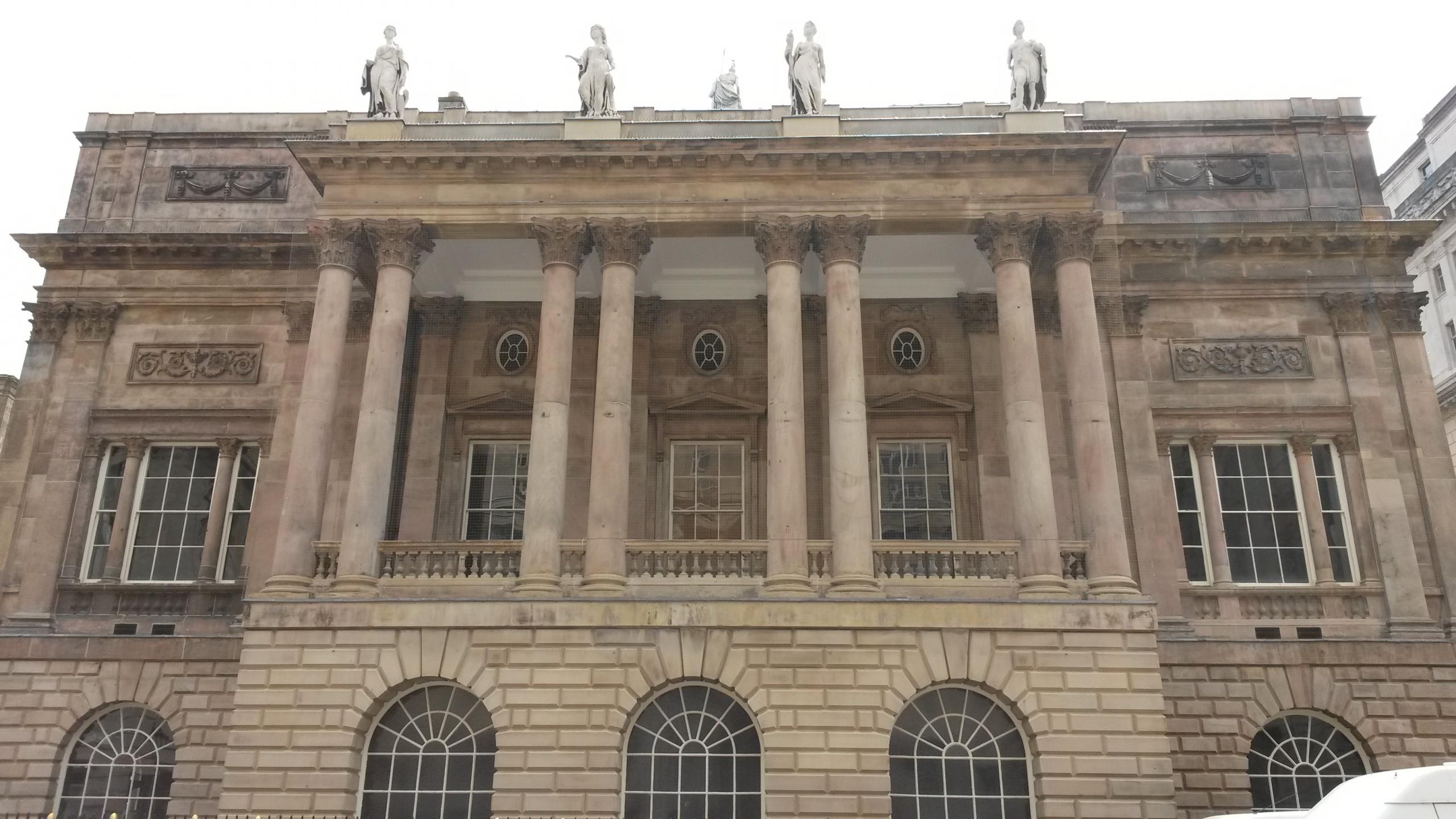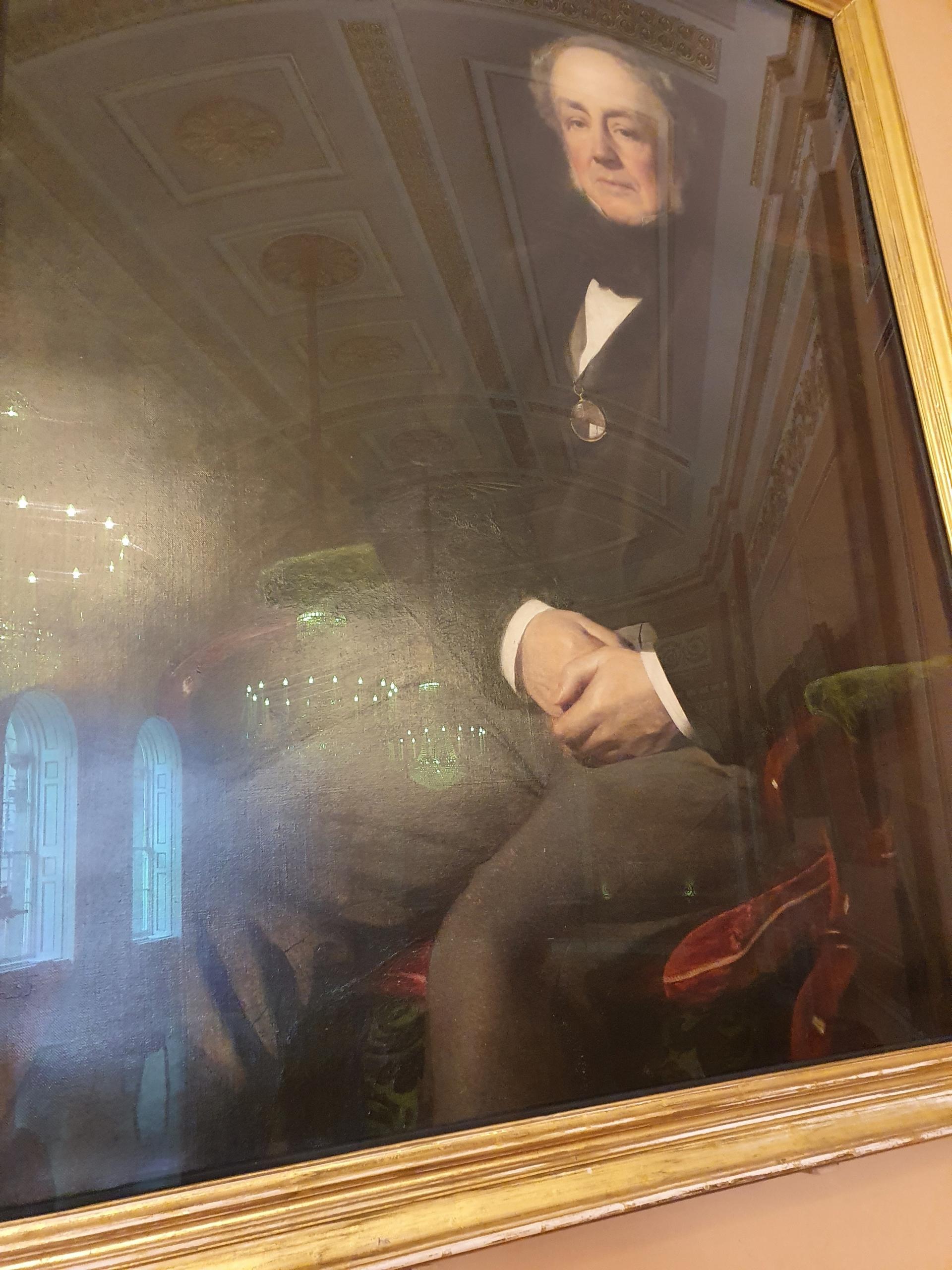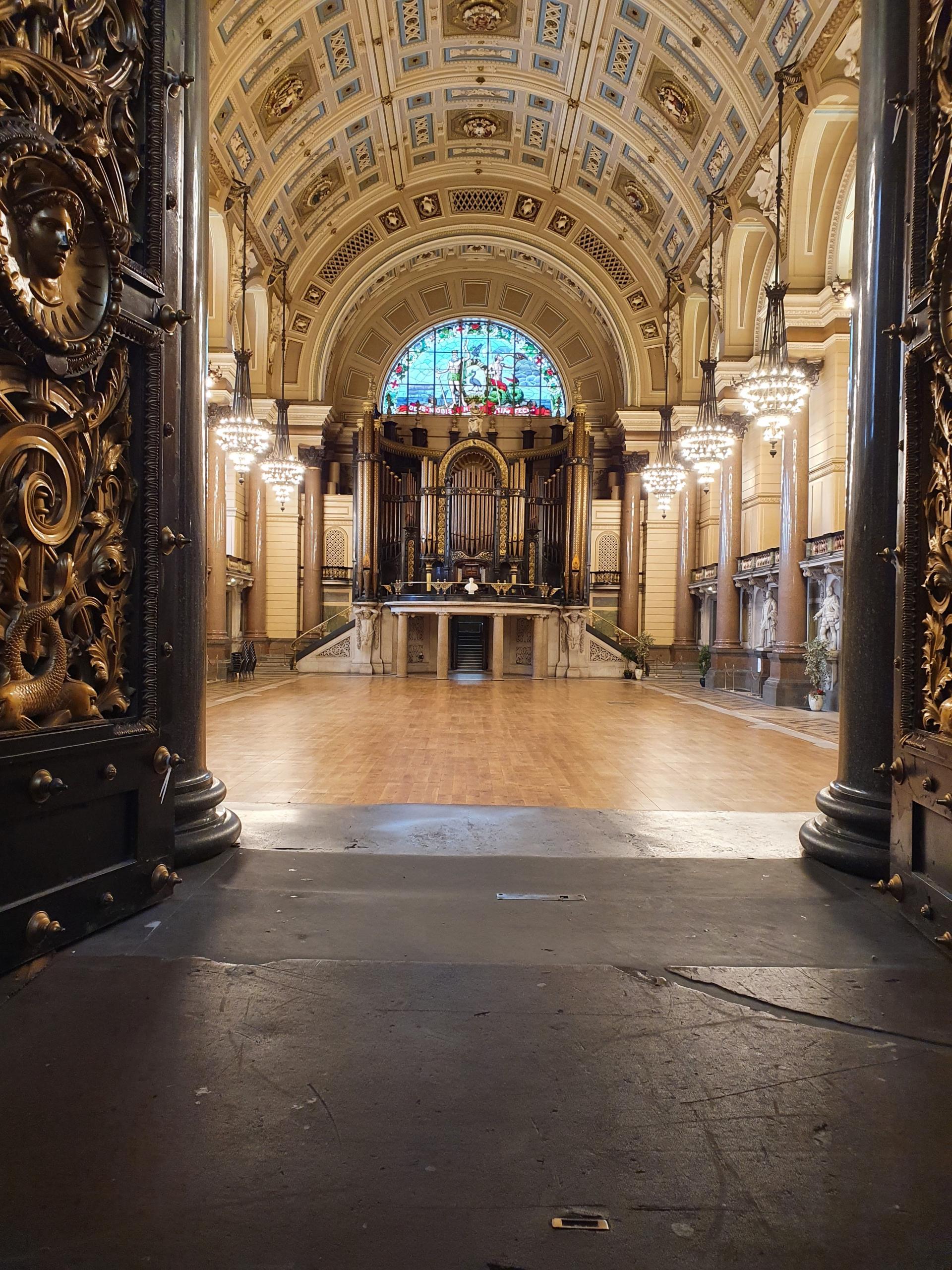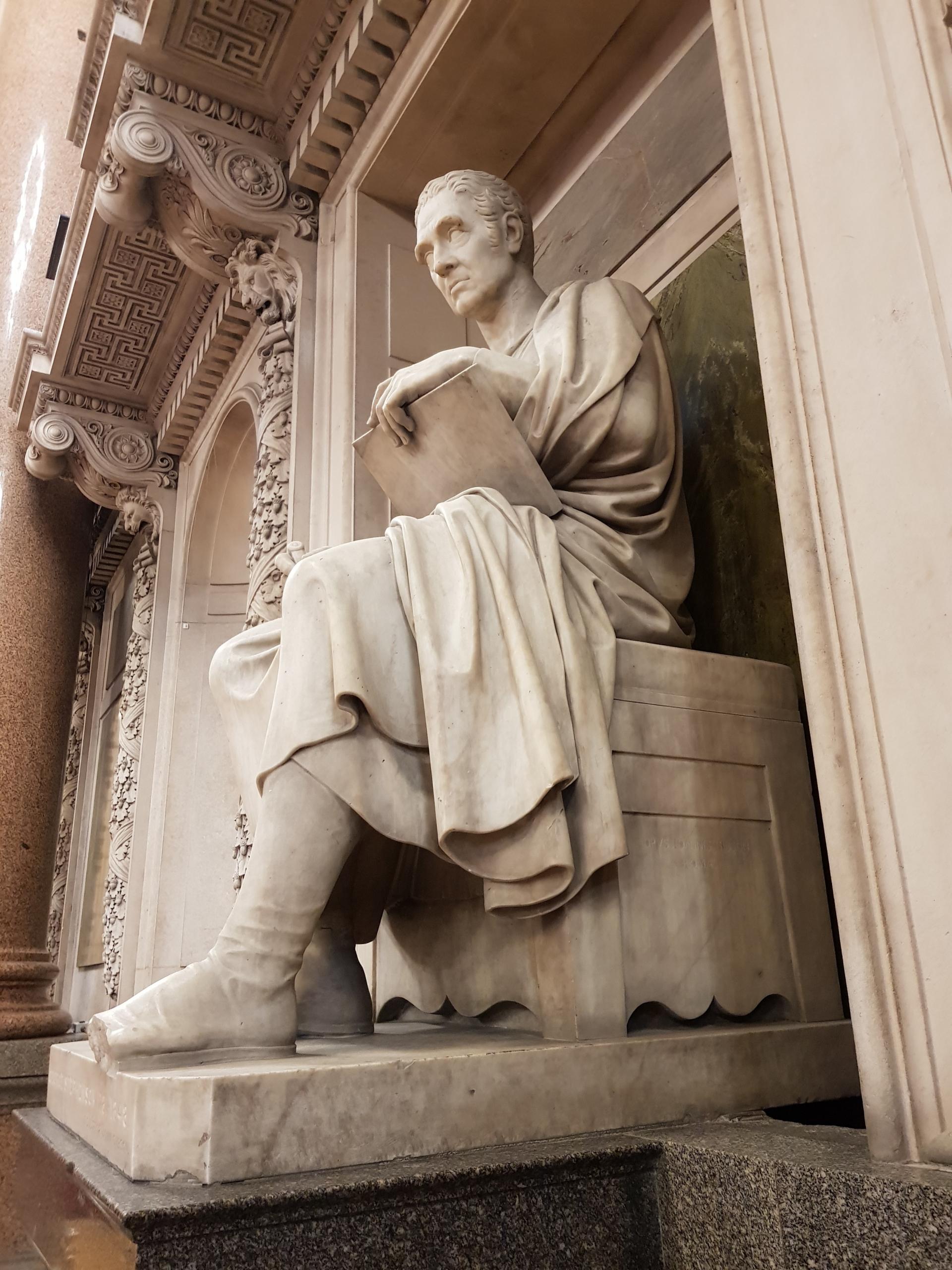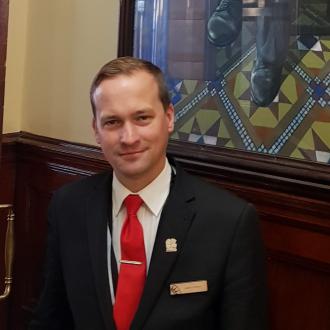OFFICIAL CITY HALLS TOUR GUIDE, JAMES O’KEEFFE, DETAILS A ROYAL VISIT WHICH LINKS THREE OF THE CITY’S FINEST SURVIVING BUILDINGS…
Have you heard the phrase “queen’s weather” and wondered where it comes from? Well, it’s an idiom that was created to describe the pleasant weather that seemed to follow Queen Victoria everywhere she went for a public engagement: “Queen’s weather” because it seemed that, no matter what time of the year, or where she went, Victoria would always enjoy fine weather conditions. Unfortunately, queen’s weather was not experienced by Victoria on her first visit to Liverpool in October 1851 as a guest of the Earl of Sefton. On this occasion, Queen Victoria and her family were welcomed by a very wet and rainy Liverpool. She had been invited to visit the nearly-complete St George’s Hall before the new courts opened in the December of that year.
Interestingly, Queen Victoria’s visit of 1851 actually links all three Liverpool City Halls: Croxteth Hall, Liverpool Town Hall and St George’s Hall, as they were all locations for the queen to visit. The visit left a lasting impression on Queen Victoria and inspired her to make two memorable statements about the Town Hall and St George’s Hall that are frequently recalled in these buildings even to this day!
The Queen Victoria (dated 1869) and Prince Albert (dated 1866) equestrian statues by Thomas Thornycroft, situated on St George’s Plateau.
Victoria, her husband Prince Albert and her children had been in Balmoral in Scotland and arrangements were made for them to visit Manchester and Liverpool on their way to Windsor Castle by train. They first visited Lancaster on 8 October and later that day travelled on to Prescot Railway Station. Here, they were met by the 3rd Earl of Sefton, Charles William Molyneux (1796-1855), who was at that time the lord lieutenant of Lancashire. As guests of the Earl of Sefton, the royals were to spend the night at his residence: Croxteth Hall. The Earl, his wife Mary Augusta (1814-1906) and his children William Philip, Viscount Molyneux (1835-1897), Caryl Craven (1836-1912), Henry Harvey (1842-1915) and Cecilia Maria Charlotte (1838-1910) would accompany the Queen throughout her visit of Liverpool. Cecilia would go on to become Victoria’s Lady of the Bedchamber for a number of years. On their way to Croxteth, the royal party passed through Knowsley and the grounds of Knowsley Hall (the home of the Earl of Derby), which Victoria thought was very fine and reminded her of Windsor.
Queen Victoria and Prince Albert kicked off their visit to Liverpool at Croxteth Hall, where they spent the night as guests of the Earl of Sefton.
The Royal party arrived at Croxteth Hall at 5.20pm and were received on the terrace of what is known as the Queen Anne wing of the building by Countess Sefton and a number of her female guests. The steps were covered in a crimson cloth and a large number of Liverpool’s “ladies and gentry” as the Liverpool Mail described them, stood on the lawn and cheered enthusiastically at the arrival of the Queen. This large group of guests had enjoyed afternoon tea in a marquee that had been especially erected for the occasion on the lawn. The 16th Regiment band had entertained guests throughout the afternoon with operatic music and upon the arrival of the Her Majesty, they struck up the National Anthem. The royal standard was raised and there was the firing of a salute.
Prince Albert, accompanied by the Earl of Sefton and the Secretary of State, Earl Grey, who travelled with the royal visitors, visited the Hall’s farm and admired the various breeds of animals that he saw there. The evening brought with it a “sumptuous dinner” for the Earl’s royal guests. Among the other guests who were present at the dinner were the Earl and Countess of Derby, the Bishop of Chester, William Brown MP (cotton merchant after whom William Brown Street is named), John Bent, the Mayor of Liverpool and Hardman Earle (of the slave-trading family; his home being Allerton Tower which was designed by the architect of St George’s Hall, Harvey Lonsdale Elmes). The banquet was extremely lavish with nine courses.
An image of Harvey Lonsdale Elmes, as displayed in the Heritage trail at St George’s Hall.
After the banquet, the guests then went to the drawing room where supper was served and the Queen and Prince Albert finally retired at 11 o’clock.
Thursday 10 October was the big day for Liverpool. Unfortunately, the morning was greeted by a continuous drizzle and it continued to rain all of the day. Three carriages departed from Croxteth Hall just after 10 o’clock; the Queen, Prince of Wales and the daughter the Princess Royal in the first carriage, the other royal children in the second carriage and finally the Earl of Sefton and his family in their own carriage. Preceded by the carriages was the 16th Lancers on horseback who would lead the way around the route throughout the whole day.
Due to the wet weather, the carriages remained closed and many entrepreneurs had put stands up in that the public would have been able to watch the procession from but, because of the terrible weather, these were largely empty and it was reported that most of the owners of these stands were out of pocket for their efforts. The scene must have been impressive nevertheless as arches had been erected all the way along the route as well as flags and streamers lining the roads. School children from the local area were able to watch from special stages, and the children from West Derby Workhouse were also allowed to attend near to Tuebrook.
The route the royal party took was as follows:
West Derby Road – Brunswick Road – Moss Street – London Road – Daulby Street – Brownlow Street – Brownlow Hill – Mount Pleasant – Hardman Street – Leece Steet – Bold Street – Church Street – Lord Street – St George’s Crescent – Castle Street – Brunswick Street and finally to the landing-stage at the waterfront.
The whole route was strewn with flags, festoons and banners welcoming the Queen. On Lord Street, the goldsmith and jeweller, Joseph Mayer, had made a large copy of the Liverpool arms and put it on display outside his building.
At the landing stage, the guests boarded the Royal Yacht, Fairy and Victoria was given a gift of the plans of the docks by the Dock Committee. They cruised south along the river towards Toxteth. Unfortunately, again due to the weather, the large crowds who had gathered were not able to see the Queen and her family very easily, as they stayed in the deck cabin of the yacht. Nevertheless, the weather couldn’t dampen the crowd’s spirits and as the yacht came back up the river and approached Birkenhead cannons fired on both sides of the Mersey. At Birkenhead hundreds of school children cheered at the sight of the Queen and her family.
Returning to the landing stage, the royals boarded their carriages once more and headed towards the Town Hall. They took a scenic route:
Strand Street – Custom House – Sailors’ Home – Canning Place – South Castle Street – Lord Street and Church Street – Parker Street – Elliot Street – Lime Street – St George’s Hall – St Johns Lane – Manchester Street – Dale Street
At South Castle Street, Mr McGregor Simpson, the piper to the Queen at Balmoral, played the tune “Queen’s Welcome to Athol”, originally composed for Victoria, as her carriage passed.
The Town Hall had been specially redecorated for the visit of the queen, with the grand staircase polished and carpeted in crimson, with the carpet being described as “one of the best of its kind”. The new carpet had the symbols of the rose, thistle and shamrock in reference to the three kingdoms which make up the United Kingdom. Gold and crimson decoration was added to every room of the building. No expense was spared.
An elaborate throne for the Queen was placed into the Main Ballroom under the Minstrels’ Gallery in front of a large golden screen. On either side of this throne was a seat for Prince Albert and the pair’s eldest son, the Prince of Wales. There are two chairs in St Michael’s and All Angels Church, Hathersage, Derbyshire, which were from Victoria and Albert’s visit of Liverpool in 1851. Perhaps they were these two chairs. The royal party entered the Main Ballroom past the water bailiff, mace bearer and sword bearer of the Corporation.
A mace bearer and sword bearer were present on Queen Victoria’s visit to Liverpool Town Hall, which displays a sword and mace within its silver collection.
The Queen, in the throne, then received an address on behalf of Liverpool by the Town Recorder before a large audience that included all members of the Liverpool Corporation. The address had been inscribed on vellum and placed into a cylindrical gold plated case which included engravings of St George’s Hall, the Town Hall, the Sailor’s Home (the foundation stone of which had been laid by Prince Albert on his previous visit in 1846), St Nicholas’s Church, the Custom House and the landing-stage. The seal of the address was enclosed by a solid gold Lancashire rose in reference to the Queen being the Duke of Lancaster. All of this was then put into a box that had been made from one of the timbers from the roof of Prince Rupert’s cottage, Everton. Prince Rupert (1619-1682), Queen Victoria’s five times great uncle stationed himself at Everton along with 10,000 Royalist soldiers during the English Civil Wars in June 1644, in preparation of taking control of Liverpool back from the parliamentarians. The cottage in which he stayed on Everton Brow was still standing until 1845 and is included in an early nineteenth century painting that hangs today in the Small Ballroom of the Town Hall. The Earl of Sefton’s ancestor Caryll Molyneux, later the 3rd Viscount Molyneux (1620-1699), fought alongside Rupert during the two-week siege of Liverpool and was instrumental in the royalist victory there.
An early nineteenth century painting of Everton, which hangs today in the Small Ballroom of the Town Hall.
A special day for Liverpool was made even more special for the Mayor of Liverpool, John Bent: just before lunch, he was knighted by the Queen and became Sir John Bent. Immediately after the conclusion of this ceremony, Victoria and Albert stepped out onto the balcony looking out upon Exchange Flags. Here again, she faced huge crowds, holding umbrellas aloft and cheering. This view clearly left an impression on the Queen because she would later comment that she had never before seen so many well-dressed gentlemen as she had from that balcony of Liverpool Town Hall. Even today, many people who visit the building are familiar with that remark, and this balcony is still referred to as the Queen’s Balcony.
The rear balcony of Liverpool Town Hall, still referred to this day by many as “the Queen’s Balcony”.
A portrait of Sir John Bent, which hangs in the Small Ballroom of Liverpool Town Hall.
Lunch at the Town Hall was served in the Dining Room and was provided by the Town Hall’s preferred caterer, hotelier William Lynn. Lynn was the owner of the Waterloo Hotel, Ranelagh Street. Here, again, is a link between the three city halls: every time St George’s Hall’s architect Elmes visited Liverpool, he would always stay at Lynn’s hotel. Additionally, the Earl of Sefton would also have been well-acquainted with the hotelier, as Lynn was instrumental in the creation of both the Grand National and the Waterloo Cup (hare coursing three-day event held at Altcar every January until it was banned for animal cruelty in 2005) on the Earl of Sefton’s land. William Lynn originally leased land in Maghull, and then Aintree, from the 2nd Earl of Sefton (often referred to as Lord Dashalong for his love of horse racing) in 1829 for the purposes of horse racing (initially flat racing). This race became known as the Grand Liverpool Steeplechase and from 1839 onwards, the Grand National. Lynn was also responsible for the construction of a grandstand at Aintree for spectators.
The 3rd Earl of Sefton, when he was still Viscount Molyneux in 1836, won the first Waterloo Cup with his greyhound Milanie.
As they were a little ahead of the day’s schedule, after lunch and before they departed for the Town Hall, Victoria and Albert had the opportunity to stand on the balcony overlooking Castle Street, again greeted by huge crowds in the street. A few minutes later they were back in their carriages and on their way to the brand new St George’s Hall, taking the route:
Dale Street – Manchester Street – St John’s Lane
Just like everywhere else along the route, huge crowds had gathered outside St George’s Hall to welcome the Queen and her family.
As the Queen’s carriage approached St George’s Hall the band of the Fusiliers, replete with their mascot, a Cashmere goat, played the National Anthem and at the end someone shouted: “Three cheers for the goat!” The large crowd cheered three times and, according to the newspaper report when this was done the goat “drew himself proudly to his full height, and shook his head and horns knowingly, as though he quite appreciated the compliment”!.
Entering through the building’s east portico (the Lime Street side of the building), the Queen was met by the Chairman of the St George’s Hall committee, John Buck Lloyd, the Deputy Chairman, JH Turner, and the corporation architect who was at that stage overseeing the completion of the hall’s construction, John Weightman. They first visited the Civil Court. Queen Victoria stood on the Judge’s Bench and was able to appreciate the view all the way through that courtroom, through the Great Hall and all the way to the Judge’s Bench in the Criminal Court at the other end of the building. Even today, when the doors at the back of both courts are open, you can see all the way through from one Judge’s bench to the other: incredibly, they are at the same level!
When the doors at the back of the Civil and Criminal courts are open, you can see all the way through from one Judge’s bench to the other, amidst the grandeur of the Great Hall.
As they passed through the Great Hall, south, towards the Criminal Court, they stopped to examine plans and sections of the building. At this point, Albert took the opportunity to discuss with John Weightman the great engineering feat of the Hall’s single-barrel vaulted ceiling which, when completed, would be described as the lightest in Europe. The great innovation of the ceiling is that it is made up of hollow bricks or tiles saving a huge amount of weight from it, ensuring that the whole thing would not collapse in on itself. On the subject of tiles, Albert and Weightman then discussed the planned floor made up of Stoke on Trent-based company Minton’s encaustic tiles for the Great Hall. Of course, Albert was a fan of Minton tiles; he helped to popularise the brand’s products when he commissioned a floor in these tiles for the royal holiday home on the Isle of Wight: Osborne House in 1845. Liverpool Town Hall also has its own fine example of a Minton tiled floor which the royal family must have seen on that same day.
At the time of his visit to St George’s Hall, Prince Albert had a keen interest in plans for the now famous Minton floor. He was a fan of Minton tiles and helped to popularise the brand.
Queen Victoria and Prince Albert also expressed admiration of the beautiful setting for the statue of George Stephenson which had just been completed by the sculptor John Gibson (1790-1866). In the criminal court, the Earl of Sefton demonstrated to the Royal party the layout of the room. He went so far as to stand in the dock of the court and hold up his hand as a prisoner. Prince Albert remarked that he thought it was very proper that the lord lieutenant should be versed in the practice of the courts within his own county.
The statue of George Stephenson at St George’s Hall. Queen Victoria and Prince Albert expressed admiration of the beautiful setting for this sculpture when they visited.
The original plan for the visit of St George’s Hall was that the Queen would, with Albert and her children, appear on the south portico of the Hall and receive the greetings of the crowds in the street. However, the chairman suggested that, due to the weather, it was not advisable to go ahead with it. Regardless of this advice, Victoria stated that she would not disappoint her “expectant subjects” and she stepped outside to the delight of the people gathered in the streets below.
Prince Albert was clearly very taken with the building (of course, he was a keen patron of the arts and admirer of architecture) and when the Royal party were being led back along the corridor towards their exit, he said “Let us have one more view of this beautiful hall”. They were taken off the official route that had been planned for their visit and spent some time admiring the beauty of their surroundings. As the prince stepped outside, he remarked that he could not think of a finer building where “sculpture could be so beautifully and effectively displayed”.
That visit to Liverpool clearly had a lasting impression on Victoria and Albert as they commissioned the artist William Wyld (1806-1889) to paint a picture of the building, which can be viewed here.
Victoria would also say of the building that it was “one of the finest of modern buildings. It is worthy of ancient Athens…the taste so good and pure” – words immortalized in the Heritage Centre of St George’s Hall in the South Hall.
When Victoria left St George’s Hall, she insisted that the carriages should be opened up so that the crowds who had endured a miserable wet day, would be able to see her and she could then respond to farewell greetings from the crowds. Finally, the royal family arrived at Lime Street station and boarded the royal carriage – at which point, the Earl and Countess of Sefton, as well as the Mayor, took leave of the queen. Trumpeters played the National Anthem and the crowds continued to cheer until the train finally departed and disappeared into the tunnel away from Liverpool and onwards to Manchester.
Festivities in Liverpool continued into the night with fireworks being set off at numerous locations including Castle Street, Lime Street and the zoological gardens on West Derby Road. A grand ball to celebrate the queen’s visit was held in the Main Ballroom of the Town Hall. At Croxteth, under the guidance of the Hall’s steward Mr Wilson, 700 guests, including Croxteth estate’s tenants, were treated to a dinner in the marquee on the lawn of the House. It was reported that strong ale was provided for the male visitors, and wine for the females.
So ended a memorable day in the history of Liverpool. Before 1851, the last time that a serving monarch had visited Liverpool was in 1690, when William III came before sailing to Ireland from Hoylake. Liverpool would not have to wait so long again for a subsequent visit of a monarch; Queen Victoria visited again in 1886, that time staying in Newsham Park. Prince Albert, however, never visited again, having died in 1861.
It’s interesting to note that, when Queen Elizabeth II visited Liverpool Town Hall in June 2016, the menu was adapted from the one that was presented to Queen Victoria when she made her return visit of 1886.
Queen Elizabeth II visited Liverpool Town Hall in June 2016.
SOURCES
- britishnewspaperarchive.co.uk
- Liverpool Standard and General Commercial Advertiser, 7 October 1851
- The Liverpool Mail, 11 October 1851
- Terry Cavanagh, Public Sculpture of Liverpool (1997)
- K Millington, Liverpool Town Hall (1960)
- Sir Theodore Martin, The Life of His Royal Highness, the Prince Consort, vol. 2 (1880)
- Robert Syers, The History of Everton (1830)
ABOUT JAMES O’KEEFFE
James works as one of the official guides of Liverpool’s City Halls. He has worked in his role for 12 years and delivers a wide range of tours in St George’s Hall, Liverpool Town Hall and Croxteth Hall. Highlights include monthly guided tours (for all Halls), as well as St George’s Hall Film tours, Footman tours and the special ‘Walk the Floor’ tours during the Minton Floor Reveal.
He also helps to animate events in the buildings including the traditional Toasting of the Haggis at the Burns Night Ceilidh and Dickens Readings in St George’s Hall’s Concert Room.
With a Master’s Degree in History, James’s passion is British history with a particular interest in all things Liverpool.
